CASTELLÓN DE LA PLANA, SPAIN — There is perhaps no greater meeting place for people of the same town than a football stadium. In Castellón de la Plana, 70km north of Valencia on Spain’s Mediterranean coast, the city’s residents are the driving force behind their local football team. Attending Castàlia (in full, Nou Estadi Castàlia) every other weekend is an opportunity to represent their city, proudly waving the flag of the Castellón province and wearing the historic black and white stripes of CD Castellón.
It is this fervent support, best experienced by visiting Castàlia on matchday, which affords CD Castellón a reputation as one of Spain’s biggest and most valued lower league clubs. Despite rarely tasting success and almost facing oblivion in 2011, when unpaid wages led to the club’s demotion to the Spanish fourth tier, the Albinegros are admirably well-supported, with Castàlia (capacity 15,500) attracting near-capacity crowds as a rejuvenated CD Castellón surge towards Spain’s Segunda División (second division, currently named LaLiga Hypermotion) in the 2023-24 campaign.
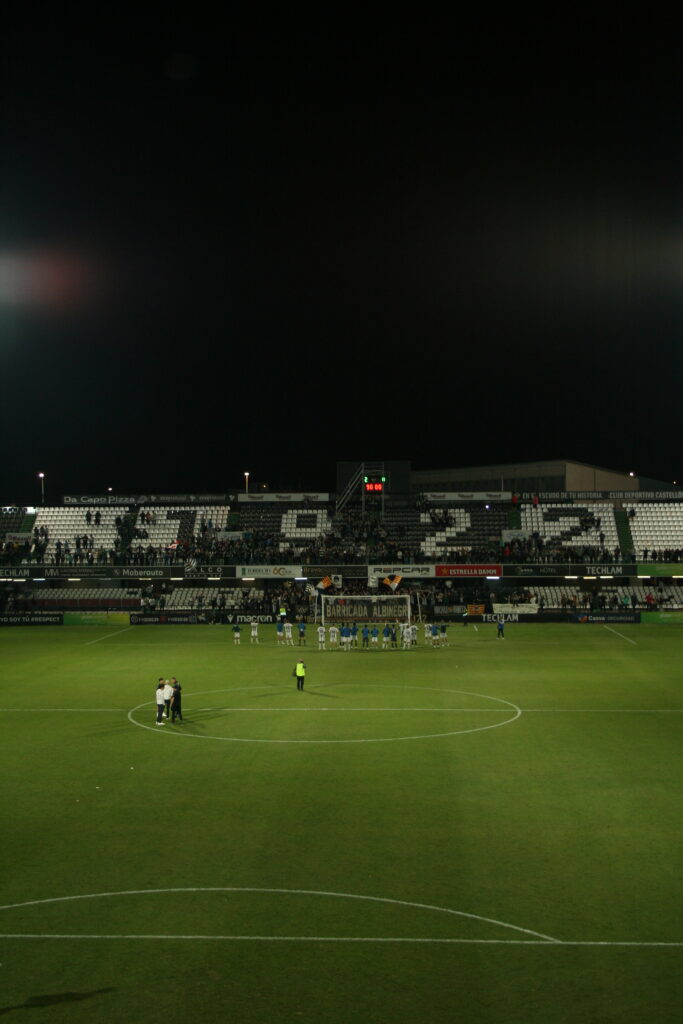
The Valencian Community, from Elche and Alicante in the south to Valencia and Castellón de la Plana further north, has no shortage of teams to support. Many in the region gravitate towards the grandeur of Valencia, while Villarreal’s recent European triumphs have captured the attention of young fans north of the Valencia metropolitan area. But Castellón retain a loyal fanbase, who have carried their team through difficult times in the 21st century to once again challenge for a place in the second tier.
Although far from the glitz and glamour of Valencia or Villarreal, make the pilgrimage to Castàlia to witness a passionate, endearing love affair with a local team, where the home afición devour pipas de girasol (sunflower seeds) in the terraces and ultras drum melodically.
How to get to the stadium
If holidaying in Valencia and looking for your football fix, a quick journey north of the city by train to Castellón de la Plana is a great option when tickets for Valencia, Villarreal or Levante are sold out or too pricey. Trains are regular (roughly every 20 or 30 minutes) from Valencia’s Estación del Norte, or if staying by the beach, simply hop on at Valencia-Cabanyal. The journey takes just over an hour by commuter train (line Cercanías 6, often abbreviated to C6), and return tickets (11.60€ from Estación del Norte) can be bought at ticket machines inside the stations. Just be wary that for evening kick-offs at Castàlia, it is best to check the timetable beforehand with few trains heading back to Valencia after 21:30.
While Castellón de la Plana is not the top destination for tourists in the Valencian region, it does have a small (and infamously inadequate) airport, named Castellón-Costa Azahar Airport. You can fly here from London Stansted, Madrid and a very limited number of other European cities.

Nou Estadi Castàlia, just north of the city centre, is walkable from Castellón de la Plana’s main train station. Head straight up Carrer del Pintor Oliet, towards the excellent views of the Tossal Gros hiking area, and before long you will be swept into a lively throng of black-and-white clad football fans. The walk takes 20 minutes from the train station, and the same from the city centre.
How to buy a match ticket
It could not be any simpler to get a ticket for Castàlia with an efficient online ticketing system, but it is certainly best to buy in advance. Locals snap up tickets online with remarkable speed, with any remaining tickets available to buy from the ticket office on matchday – but expect long queues. Getting in early via the club’s website is recommended in order to take advantage of CD Castellón’s low ticket pricing, with seats starting at just 8€ or 10€ depending on the opponent and magnitude of the game. Tickets can also be purchased in person from the stadium’s ticket office and shop.
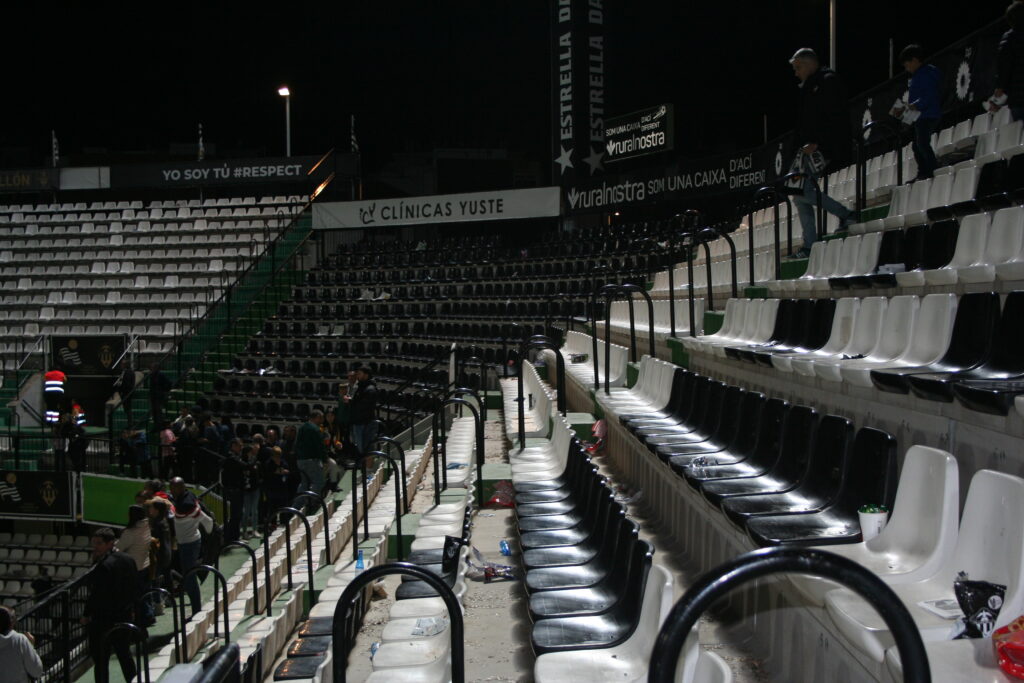
Castellón should be commended for offering affordable football tickets, in an era in which most fans are priced out of their favourite teams. Of course, the Albinegros are currently fighting for promotion from Spain’s third tier – a division (split into two groups since 2021) of historic clubs like Málaga and Deportivo La Coruña as well as reserve teams such as Real Madrid Castilla. But the entertainment on offer at Castàlia is well worth the cheap entrance fee. Castellón now attract a wide range of supporters, from eternally loyal diehards to families attending together, and with barely an empty seat on matchdays in spite of their proximity to Valencia, Villarreal and others, it is surely a successful strategy.
Where to eat and drink
- Mercat Central de Castelló (08:00-15:00 Monday-Saturday, closed Sunday) on Plaça Major, the city’s grand main square, is a must-visit for the very best of the Castellón province’s produce. Stop for lunch at one of its tempting bakery stalls and try an array of empanadas, or perhaps an afternoon drink.

- El Mirador (08:30-22:30 Monday-Saturday, closed Sunday) offers the perfect spot for a cost-effective, tasty breakfast in the centre of Castellón de la Plana with great service and croissants. In the evening, it becomes more of a bar along with the other open-air cafés on Plaça de Santa Clara.
- Café Albinegre (hours unknown), the supporters’ bar of CD Castellón, is packed on a matchday with fans standing to enjoy a cerveza on the street outside Nou Estadi Castàlia.

Where to visit
- El Fadrí (11:00-13:00 Tuesday-Saturday), a bell-tower built in 1593, is synonymous with the city of Castellón de la Plana. Climb its dusty stone steps for free, with information points on the way up, for a wonderful view of the town centre and beyond.

- Concatedral de Santa María (hours vary) is the city’s most impressive and most visited cathedral, standing on Plaça Major. Twice rebuilt, most recently following its destruction during the Spanish Civil War, its interior leaves you gazing up at the ceiling in a trance. Entrance is free via the cathedral’s towering Gothic doors.
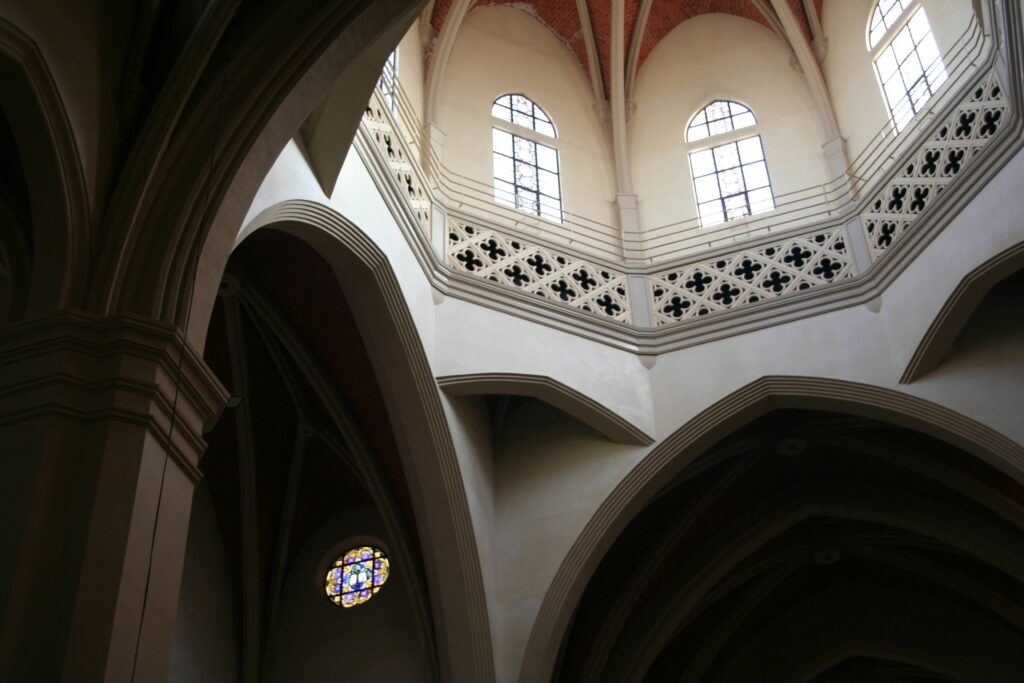
- Ayuntamiento de Castellón de la Plana, the city’s town hall building, is also located on Plaça Major with El Fadrí, the cathedral and Mercat Central just a stone’s throw away across the square. Its marvellous façade is often the backdrop for concerts and events held at Plaça Major.
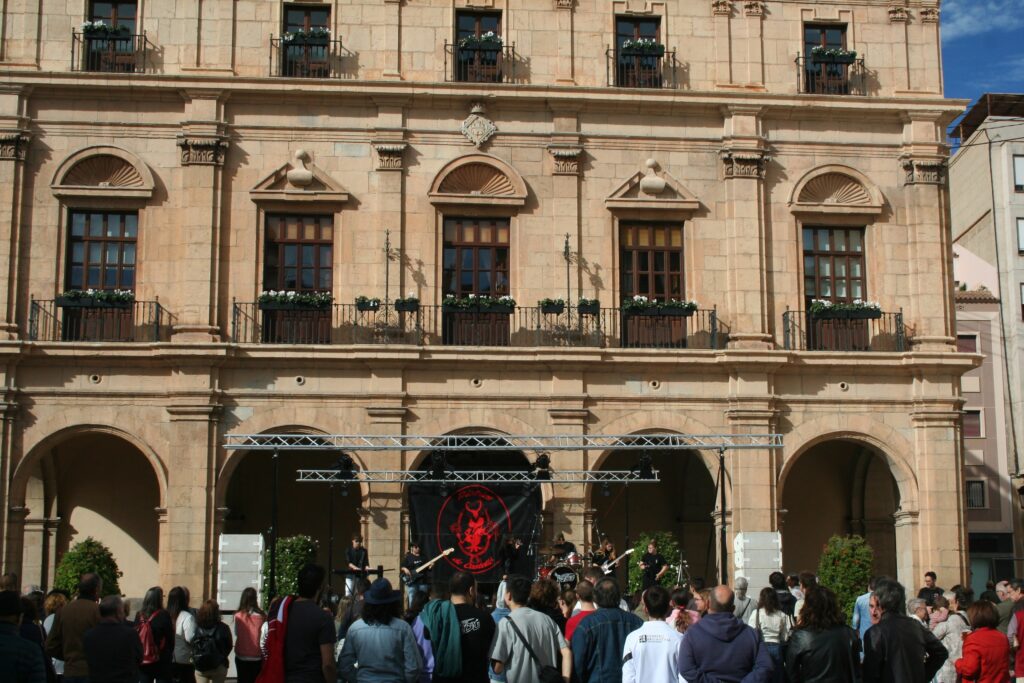
- Parc Ribalta (open 24 hours) is an elegant stop for a stroll; its interlinking trails, gardens, fountains and statues welcome visitors to the city with class.
- El Grao de Castellón, connected to the city centre by the T1 tram, is a quiet marina 20 minutes from Castellón de la Plana. There is a port, maritime museum, beachfront walkways and, of course, the beach which stretches all the way north-east to the nearby town of Benicàssim.
- Refugio Antiaéreo (16:00-19:00 Tuesday-Saturday, 10:00-14:00 Sunday, closed Monday) on Plaza Tetuán places visitors in the footsteps of Castellón de la Plana’s residents during the Spanish Civil War. This restored 1930s bomb shelter is not well advertised, but is one of the city’s most illuminating landmarks.
- Plaça de Santa Clara, just off Plaça Major, is a good area to hang out for a morning coffee or an evening drink. Marvel at the towering sculpture in the middle of the square, the Monument to the Foundation of Castellón by Vicente Lloréns Poy, and if visiting in November, the antique books market held here is not to be missed.
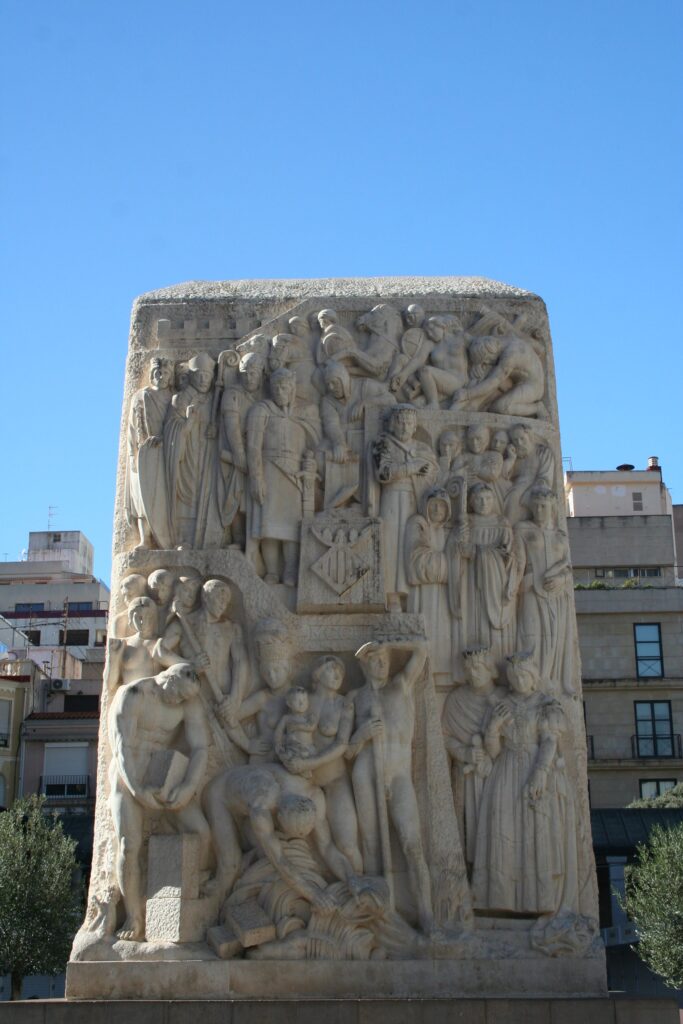
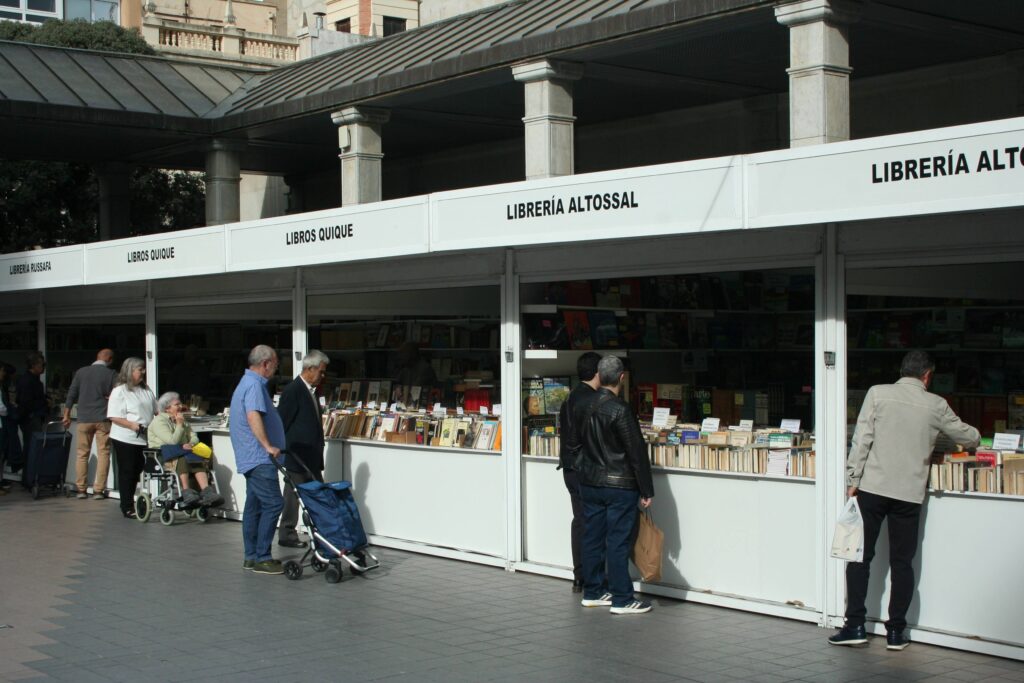
- Benicàssim, less than ten minutes from Castellón de la Plana by train, is the highlight of the city’s neighbouring towns. Home to one of Europe’s biggest reggae festivals, the Vía Verde from Benicàssim to Oropesa del Mar offers spectacular views of the Costa del Azahar with a clear walking path also popular amongst cyclists and joggers.
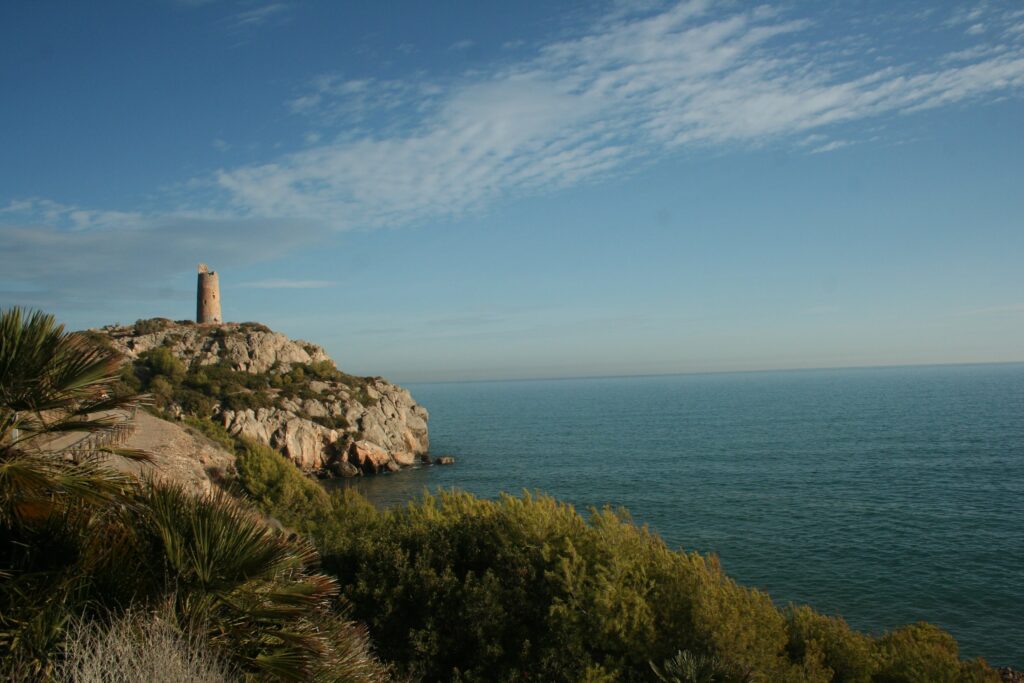
Writer’s view
CD Castellón are one of Spain’s proudest lower league teams, and the stadium, atmosphere and football does not disappoint if searching for a traditional Spanish football experience without VAR and iPhone-waving tourists. On my visit, the Albinegros comfortably triumphed 2-0 over Alcoyano. Dick Schreuder’s side appeared to rarely get out of second gear, playing a patient passing game which has propelled them to the top of their division at the time of writing. Haris Medunjanin, an effortlessly stylish veteran midfielder capped sixty times by Bosnia and Herzegovina, is a marquee player at this level and was at the heart of Castellón’s best moves, netting the opener just before half-time. At the final whistle, the ultras behind each goal eagerly wait for the team to come over to applaud the fans. The bond between management, players and supporters is tangible. Whether or not they make it out of the third tier this season, Castellón are on the rise under the ownership of Greek-Canadian Haralabos Voulgaris.

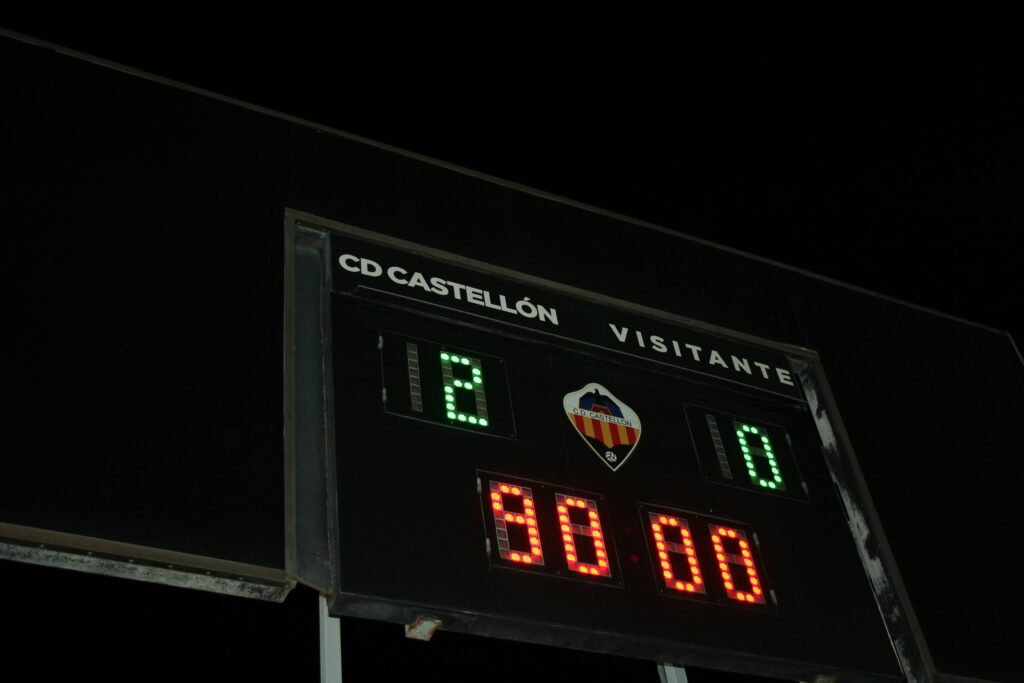
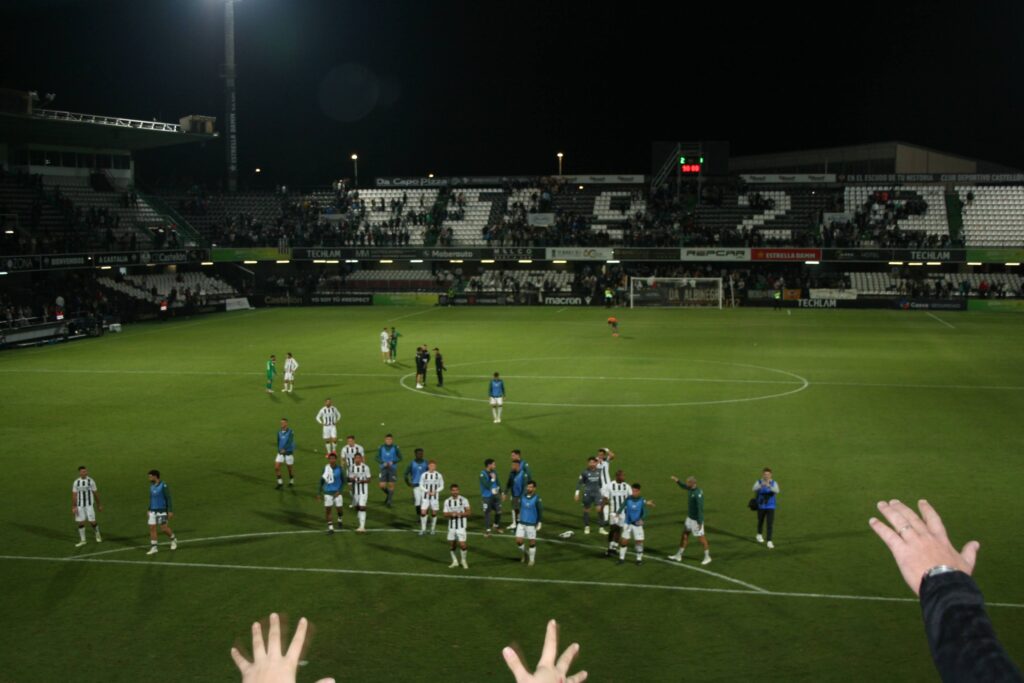


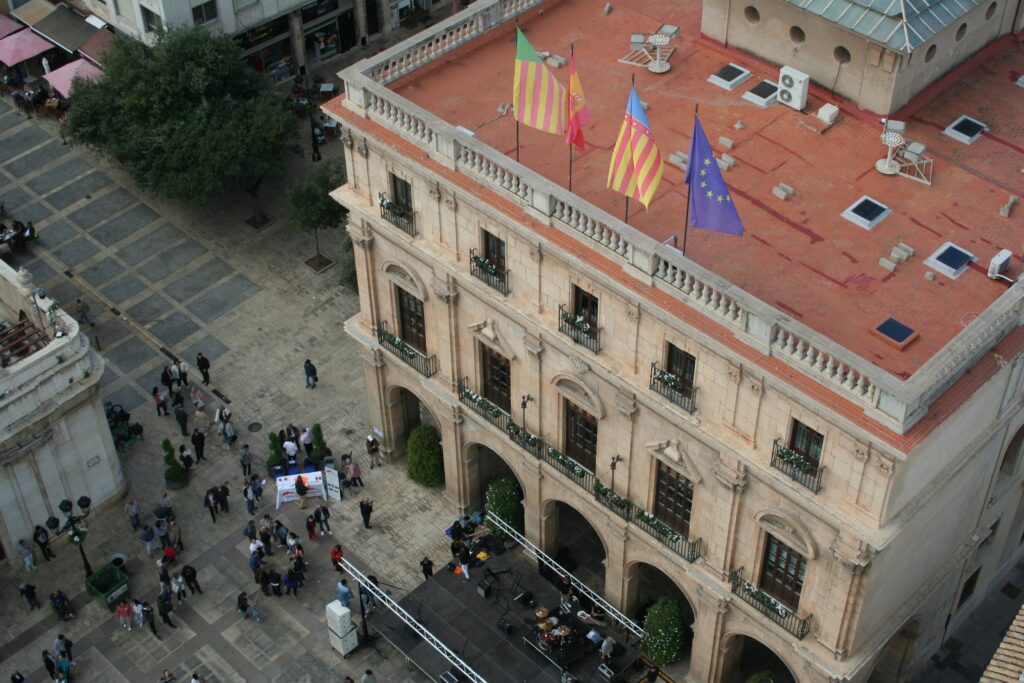
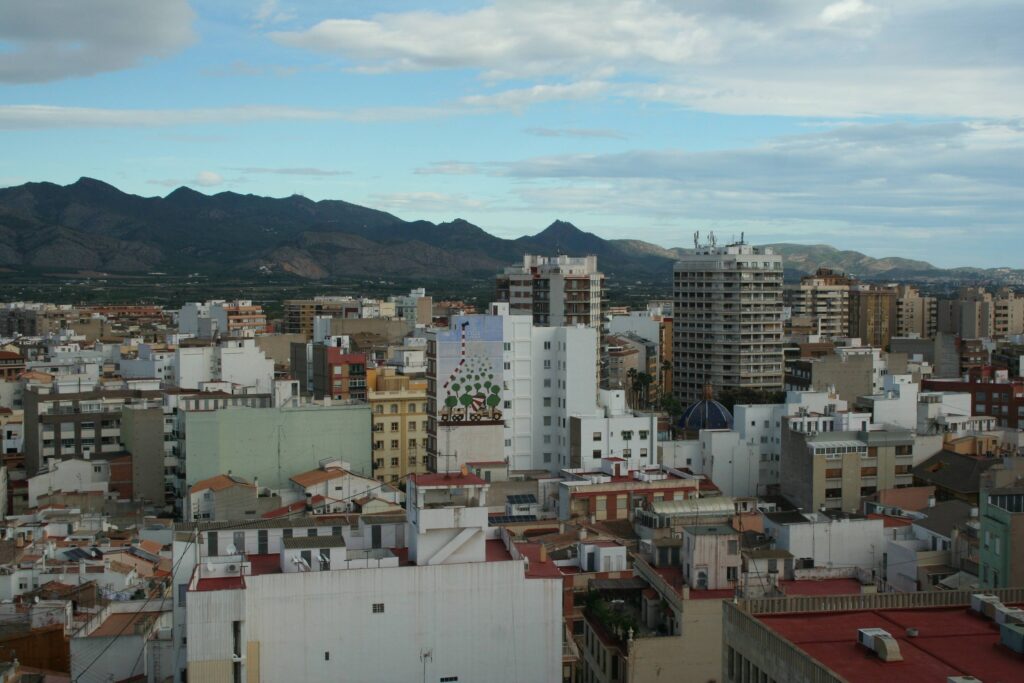
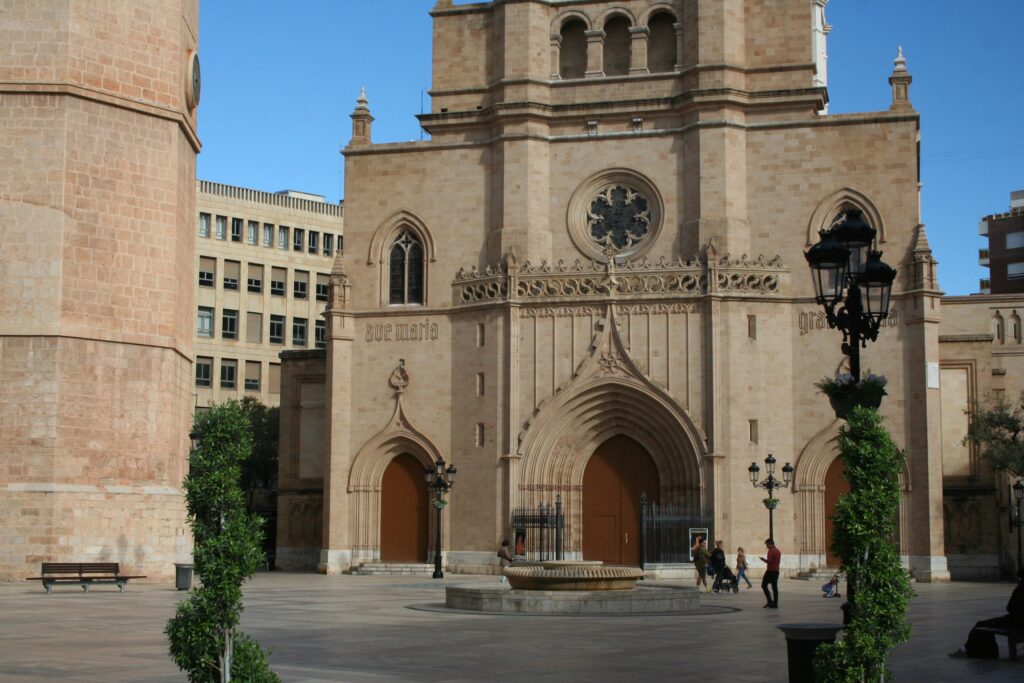
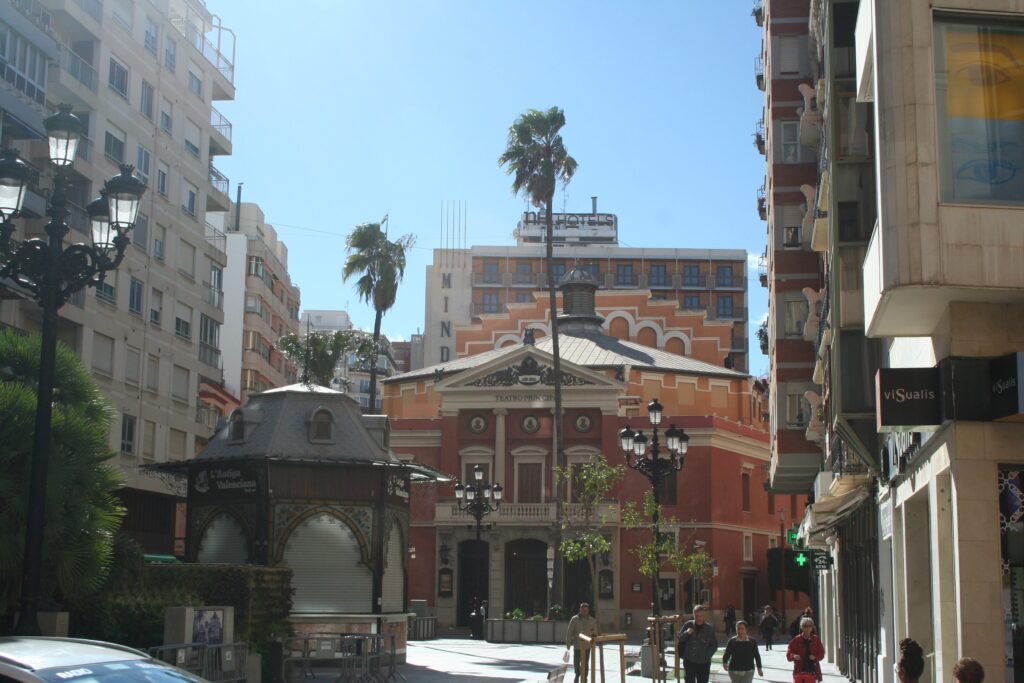
The city is perhaps best visited as a day trip from Valencia, particularly as most of its top attractions are situated in such close proximity to each other on Plaça Major. Other tourists were few and far between when I visited in November, but it is a lively city with enough to offer when combined with the attraction of a match at Castàlia – one of the Valencia region’s most charming football stadiums.




